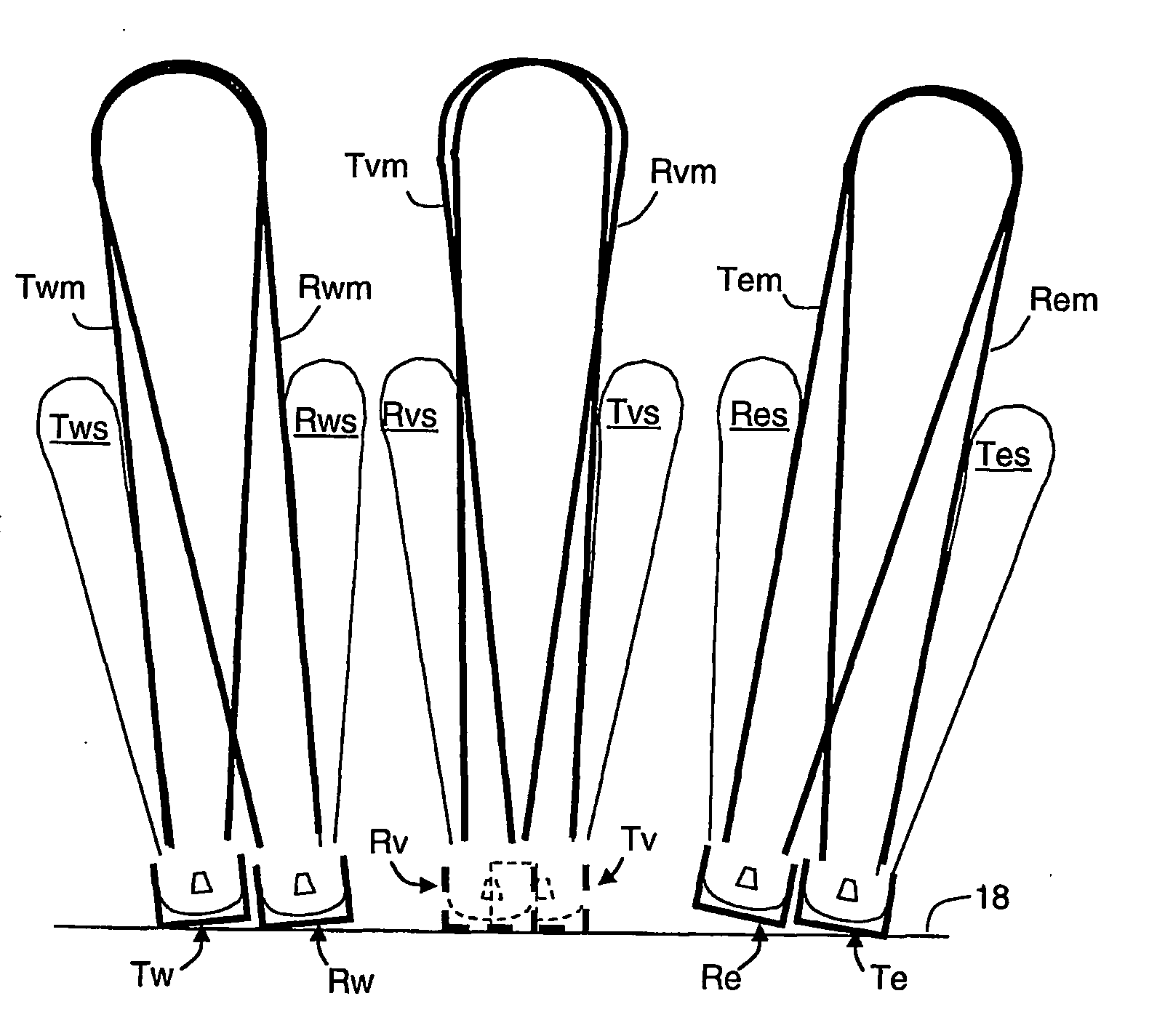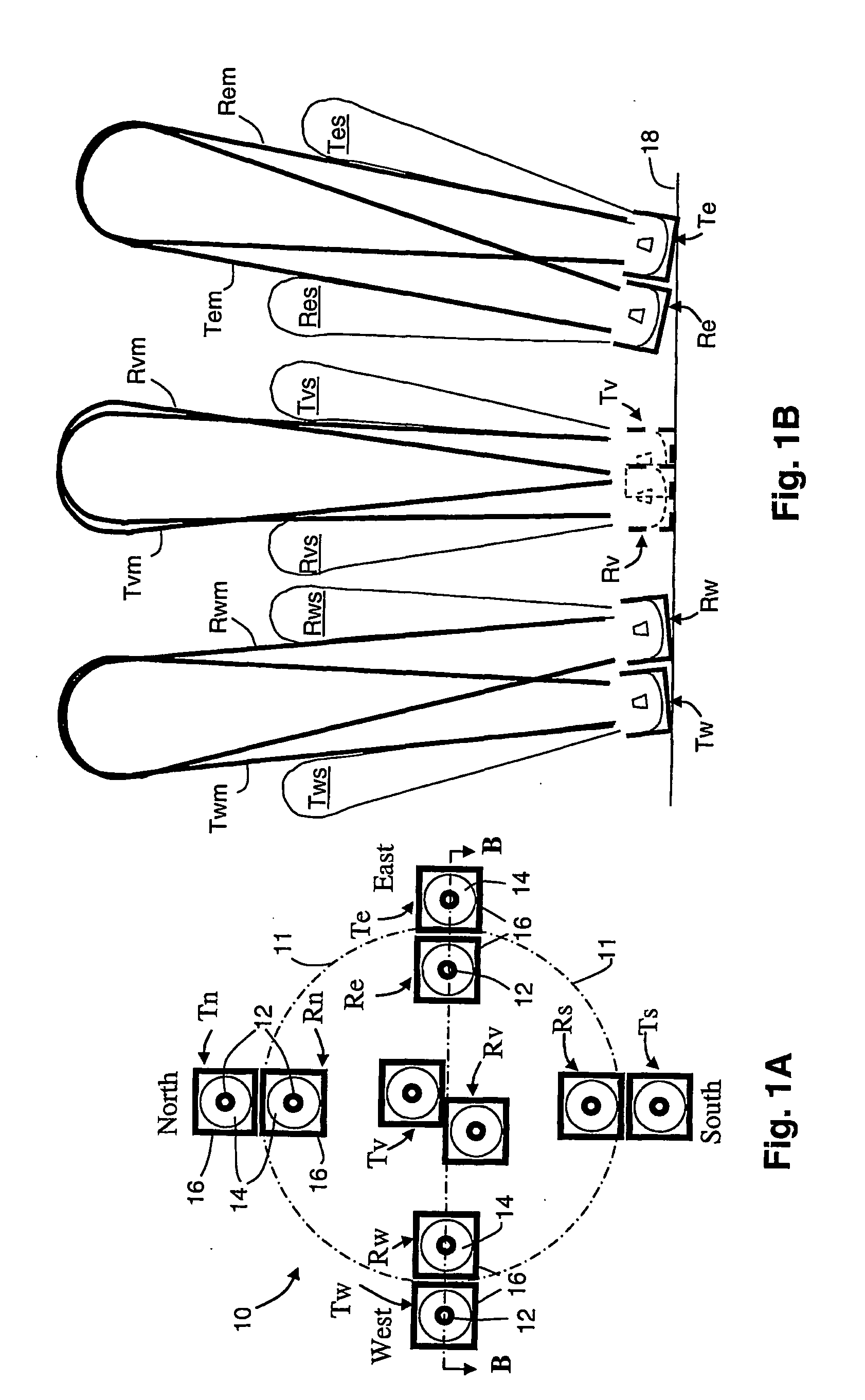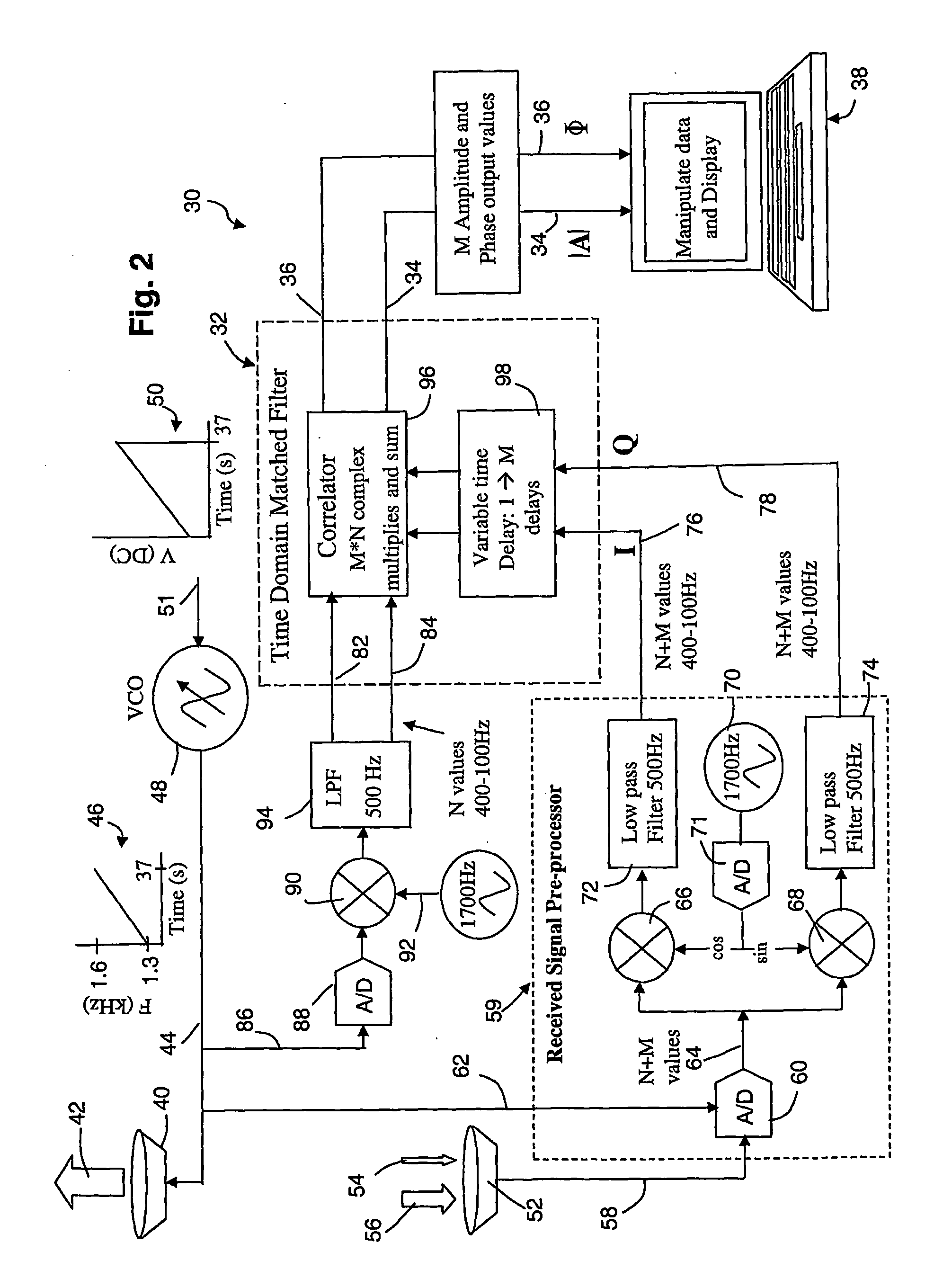Sodar sounding of the lower atmoshere
a technology of sounding apparatus and atmosphere, applied in the field of lower atmosphere sounding method and apparatus, can solve the problems of affecting the accuracy of the system, so as to achieve the effect of reducing the loss of system accuracy, increasing the system cycle time, and reducing the time of chirp
- Summary
- Abstract
- Description
- Claims
- Application Information
AI Technical Summary
Benefits of technology
Problems solved by technology
Method used
Image
Examples
Embodiment Construction
OF THE INVENTION
[0023]Having portrayed the nature of the present invention, a particular example will now be described with reference to the accompanying drawings. However, those skilled in the art will appreciate that many variations and modifications can be made to the chosen example while conforming to the scope of the invention as defined in the following claims.
BRIEF SUMMARY OF THE DRAWINGS
[0024]In the accompanying drawings:
[0025]FIG. 1A is a diagrammatic plan view showing an array of five transmitter-receiver pairs that form the atmospheric acoustic sounder of the first example, FIG. 1B being a diagrammatic side elevation of the array taken through center line B-B of FIG. 1A. FIGS. 1A and 1B are not drawn to scale.
[0026]FIG. 2 is a block diagram of a time-domain matched filter signal processing system comprising the first example of a system suitable for use with the vertical transmitter-receiver pair of the array of FIGS. 1A and 1B and a linear FM chirp.
[0027]FIG. 3 is a seri...
PUM
 Login to View More
Login to View More Abstract
Description
Claims
Application Information
 Login to View More
Login to View More - R&D
- Intellectual Property
- Life Sciences
- Materials
- Tech Scout
- Unparalleled Data Quality
- Higher Quality Content
- 60% Fewer Hallucinations
Browse by: Latest US Patents, China's latest patents, Technical Efficacy Thesaurus, Application Domain, Technology Topic, Popular Technical Reports.
© 2025 PatSnap. All rights reserved.Legal|Privacy policy|Modern Slavery Act Transparency Statement|Sitemap|About US| Contact US: help@patsnap.com



